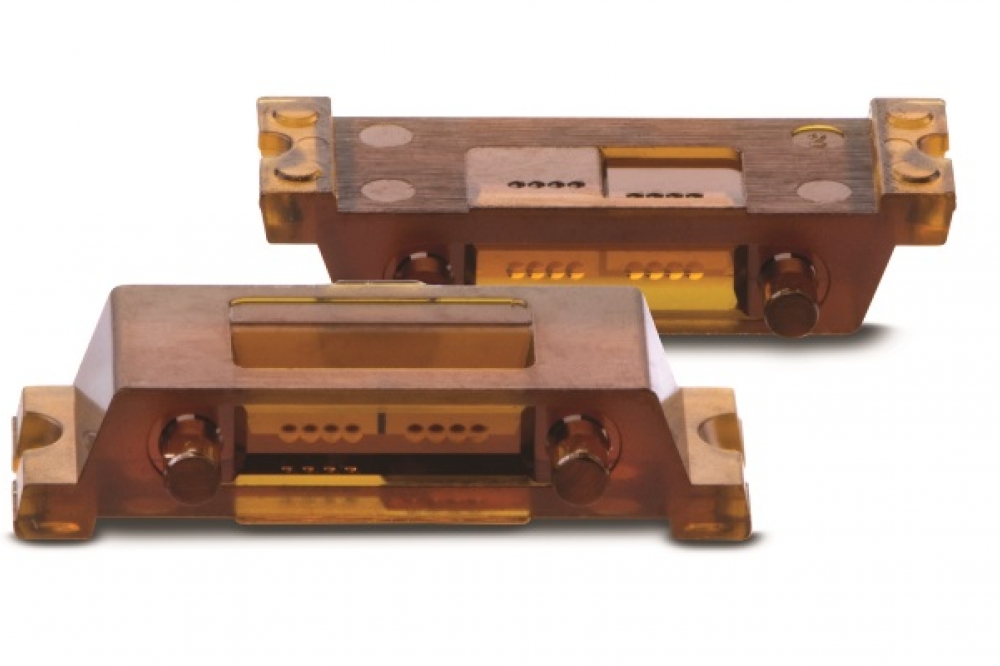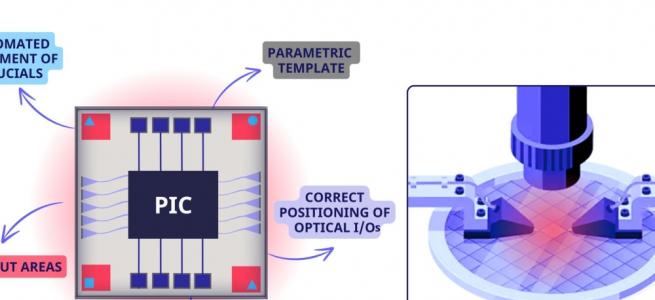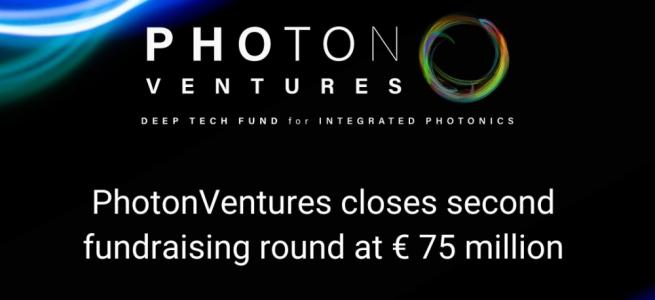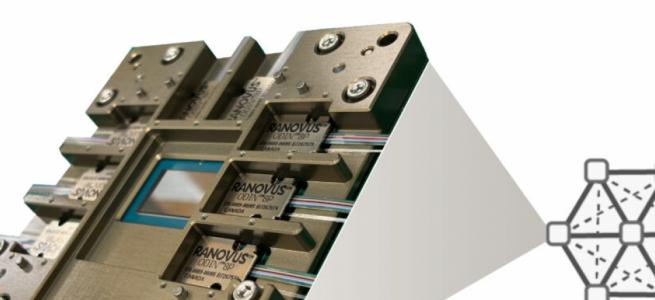SABIC’s announce IR-transparent, solderable resin

Top image: Optical interconnect lens designed and produced by Nalux
Co., LTD, is made with SABIC’s new ultra-high-heat, near-infrared
(IR)-transparent EXTEM™ RH1016UCL resin.
SABIC launched at ECOC Exhibition 2022, EXTEM™ RH1016UCL resin, a new ultra-high-heat, near-infrared (IR)-transparent grade well-suited for injection-molded lenses used in co-packaged optical transceivers and other optical connectors. EXTEM RH1016UCL resin is one of the first IR-transparent thermoplastics that can robustly withstand the 260°C peak temperature of printed circuit board (PCB) reflow soldering while maintaining dimensional stability of the molded part. This capability helps enable optical connectors to be mounted with other components in one step, avoiding the separate assembly and alignment processes that are required for lower-temperature lens materials. The new EXTEM resin also provides high-throughput, precision micro-molding capability for enhanced productivity. Together with optical design freedom and breakthrough high-temperature performance, this new resin can help customers transition from pluggable optics to co-packaged optics that support increased data center speed, scale and energy efficiency. EXTEM RH1016UCL resin has been validated by a major technology OEM in the United States.
The new EXTEM RH1016UCL resin was featured in a presentation by SABIC’s Chief Scientist, Gabrie Hoogland, at the International Symposium for Optical Interconnect in Data Centres, part of ECOC 2022. His presentation, titled “Novel Thermoplastic Resins Well-Suited for Optical Interconnects.”
“Co-packaged optics are a next-generation technology that can help increase data center reliability and reduce power usage and costs by bringing the optics much closer to the main switching ASIC,” said Florian Jung, global business manager, ULTEM and EXTEM, SABIC’s Specialties Business. “Producing complex, miniaturized lenses and arrays for co-packaged optics calls for new materials that can overcome the design, manufacturing scalability and system cost drawbacks of glass. SABIC’s new EXTEM RH1016UCL resin addresses these needs while helping to advance this emerging technology and opening new opportunities to help improve PCB integration density and energy efficiency.”
Moving Optics onto the Board
As data centers strive to accommodate demands for more bandwidth and faster transmission rates, network packet switching is experiencing higher power usage and greater latency. Co-packaged optics offer a means of reducing both. Co-packaging optical connectors with application specific integrated circuits (ASICs) used for Ethernet switching, and relocating them to the PCB, can reduce the power required to drive the interface between these components.
In contrast to pluggable optics, co-packaged optics place higher demands on materials. They must be able to retain their shape during the stresses of the PCB assembly process, which includes very high reflow soldering temperatures of up to 260°C. While glass can withstand this heat, it is difficult to produce complex lenses and arrays using glass, and the parts typically require time-consuming secondary grinding and polishing. Molding glass components is possible, but it is expensive and difficult to scale.
Debuting a Breakthrough, Ultra-high-heat Thermoplastic
EXTEM RH1016UCL resin delivers multiple advantages for co-packaged optics. As a thermoplastic, it helps enable designers to create complicated geometries and leverage part integration. Good flow properties support thin-wall designs and efficient, multi-cavity molding. During PCB assembly, EXTEM RH1016UCL resin demonstrates excellent dimensional and optical stability to avoid part deformation and retain signal integrity. On top of this, the material’s high refractive index and near IR transparency help elevate lens performance. The availability of optical constants for EXTEM RH1016UCL resin in the materials database of Zemax OpticStudio® helps optical designers create new and innovative interconnects.
“Using a special chemistry, we developed a new EXTEM resin with very high heat resistance that now supports the placement of optical interconnects with thermoplastic lenses close to the ASIC chip prior to PCB assembly,” said Gabrie Hoogland. “Co-packaging helps make the electronic signal path as short and seamless as possible to facilitate very high data transmission rates. To assist customers in adopting EXTEM RH1016UCL resin, SABIC’s global technology centers provide micro-molding capabilities, including state-of-the-art equipment to test optical properties and constants, metrology, reflow soldering stability and application (hydro)aging.”
At the ECOC Exhibition, SABIC is displaying parts molded from EXTEM RH1016UCL resin, including aspherical test lens and a mountable lens array with multi-fiber push-on (MPO) connector pins, as well as a 12-lens tool used for material testing. In addition, the company is featuring aspherical test lens and lens array molded from SABIC’s recently launched ULTEM™ 3310TD resin, which targets optical transceiver collimator lenses used in single-mode fiber optic systems. There is also on display a pluggable MPO connector made with ULTEM 1010 resin, which has been a popular choice for thermoplastic lenses for decades.

































